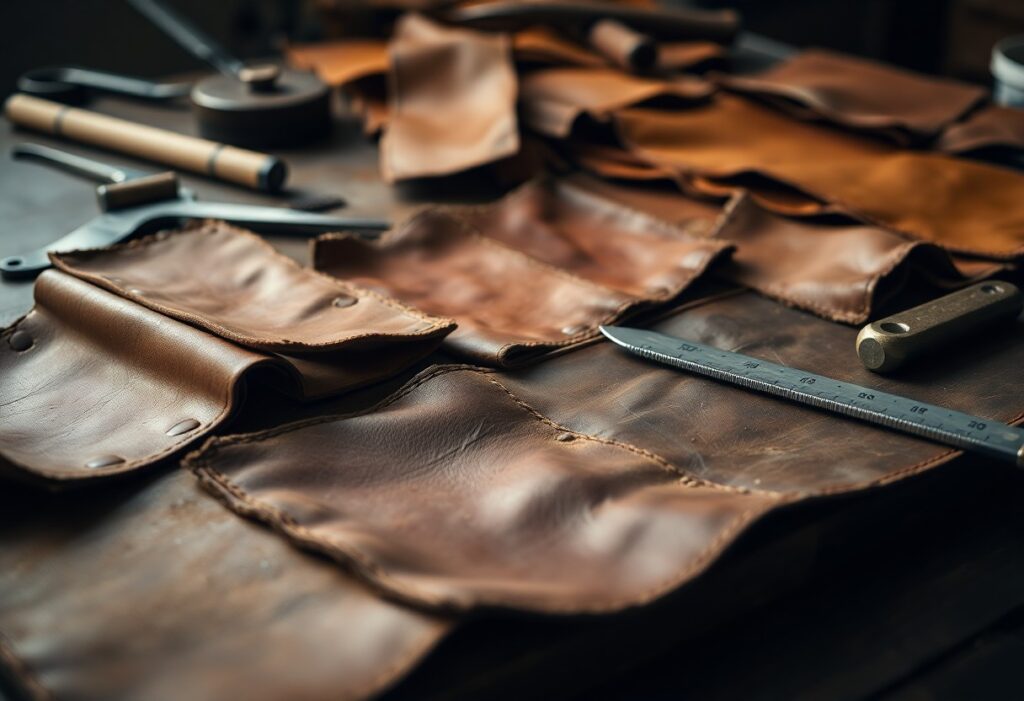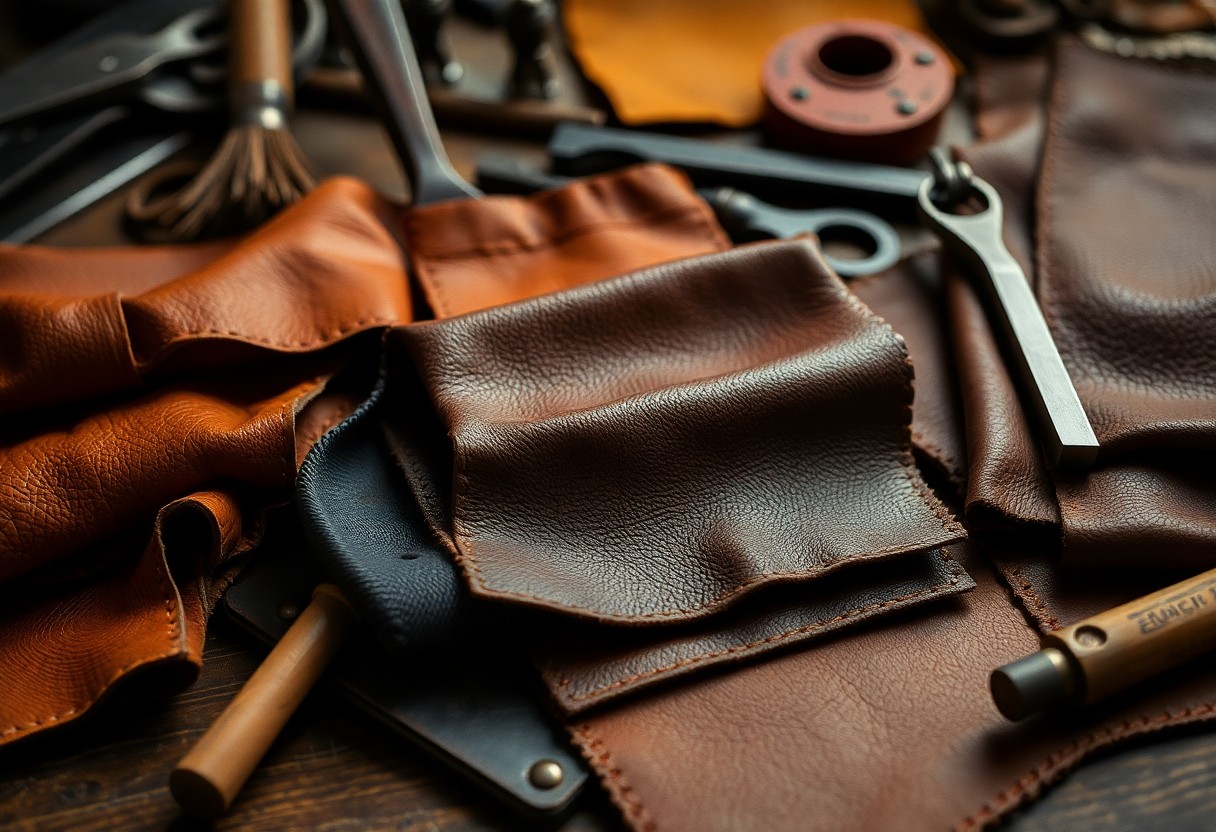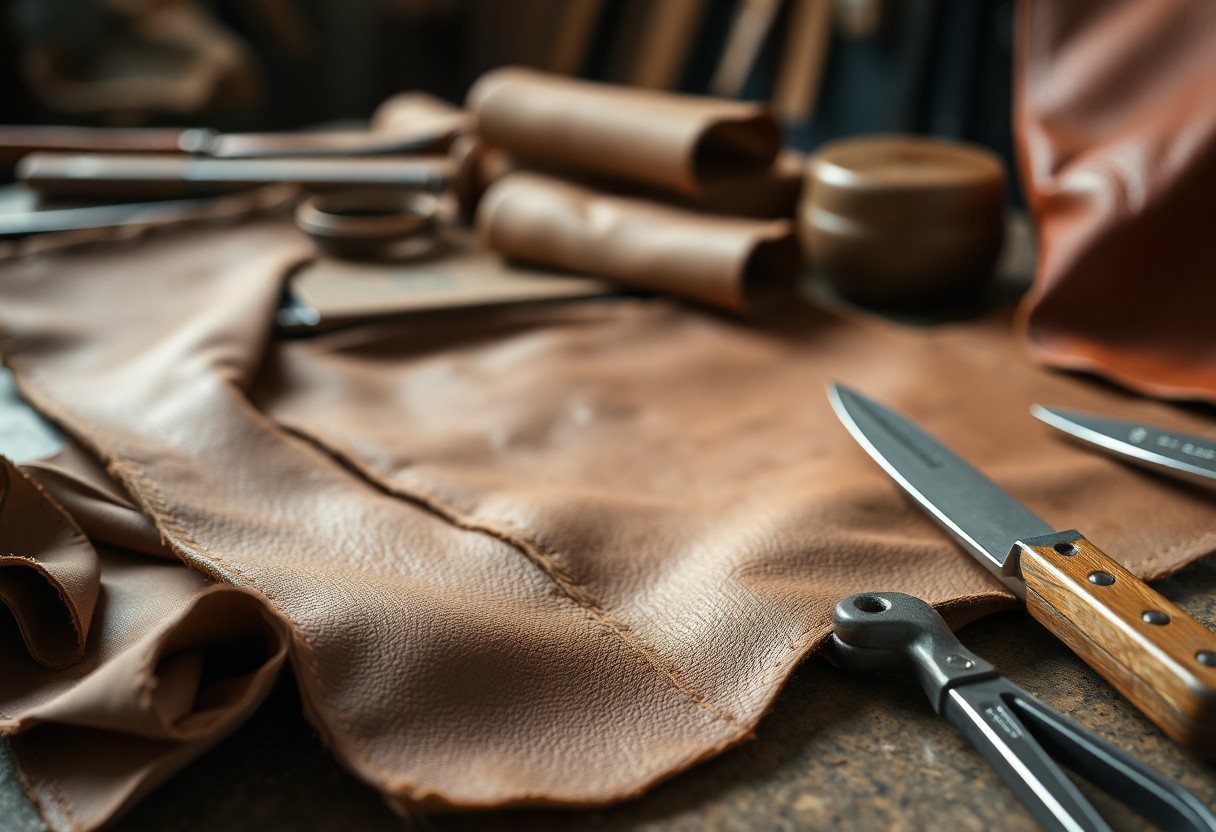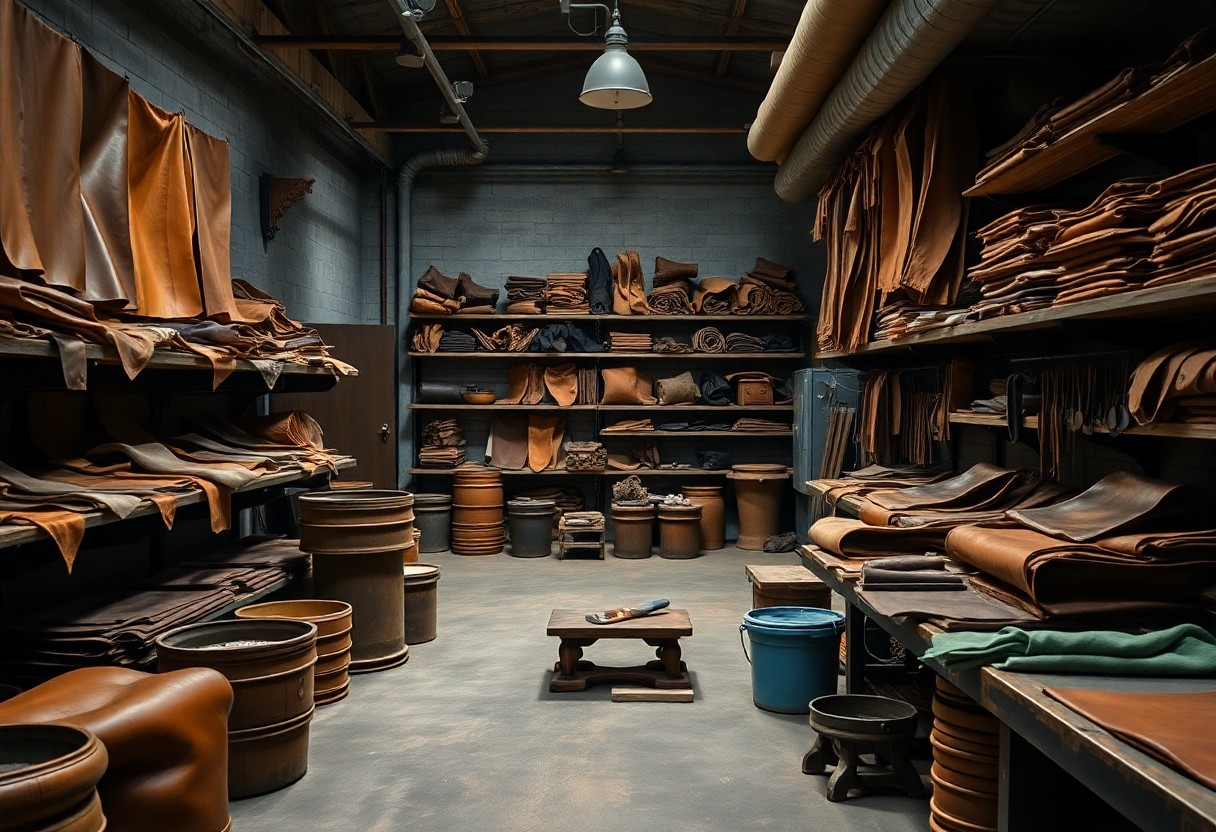
The journey of leather tanning has transformed significantly over the years, leading to a sophisticated process that has a profound effect on the quality of your leather goods. Different tanning methods produce leather with distinct characteristics, which play a crucial role in defining its attributes such as durability, water resistance, texture, and color longevity. The tanning procedure starts with raw hides and progresses through several essential stages, encompassing chrome tanning, vegetable tanning, and chrome-free techniques. Each of these methods imparts unique properties to the leather, influencing its performance and upkeep. By gaining a comprehensive understanding of these processes, you empower yourself to make informed choices regarding leather quality while also weighing the environmental implications, as some methods are considerably more sustainable than others.
Discover the Different Leather Tanning Techniques for Superior Quality
When producing leather, a range of tanning techniques is utilized to convert raw hides into practical leather products. The primary methods encompass chrome tanning, vegetable tanning, and chrome-free tanning. This extensive guide aims to equip you with knowledge about the subtleties of each method, enabling you to select the most suitable technique for your leather requirements.
| Method | Characteristics |
| Chrome Tanning | Rapid processing, highly water-resistant, constitutes 85% of global production |
| Vegetable Tanning | Natural, eco-conscious, accounts for 10% of production |
| Chrome-free Tanning | Environmentally safe, represents 5% of production |
| Combination Tanning | Integrates various methods for unique leather properties |
| Aldehyde Tanning | Specialized approach for specific applications |
Gain Insights into the Chrome Tanning Technique
The chrome tanning process utilizes chromium (III) salts, resulting in leather that is both soft and flexible, making it a highly sought-after material across multiple industries. This method yields leather that not only possesses water resistance but is also easily dyed, contributing to its popularity. Remarkably, the chrome tanning procedure is efficient, typically completed within a span of just 24-48 hours, which is vital for mass production demands.
Explore the Timeless Craft of Vegetable Tanning
As one of the oldest and most traditional leather tanning methods, vegetable tanning employs natural tannins extracted from tree bark and leaves. This technique is revered for its capacity to produce leather that matures beautifully over time, developing a rich patina while being biodegradable. Various types of vegetable tanning, including those using oak, chestnut, and mimosa extracts, each contribute to the distinctive features of the finished product. Expect this labor-intensive process to span around 4-6 weeks, yielding leather that is generally firmer and more structured compared to chrome-tanned options.

In-Depth Overview of the Leather Tanning Journey
The transformation of raw hides into premium finished leather involves a systematic and organized process. Below is a detailed examination of each key step and its importance in achieving the desired quality of leather.
Crucial Pre-tanning Steps for Superior Leather Quality
To guarantee exceptional leather quality, raw hides must undergo a meticulous series of preparation steps. This initial phase involves soaking the hides in fresh water for 24-48 hours to remove salt and impurities, followed by a liming process that effectively eliminates hair and fats. Maintaining precise pH control during this phase is critical to prevent any potential damage to the hides, ensuring they are in optimal condition for the tanning process.
Key Steps in the Main Tanning Procedure
The pretanning phase initiates with deliming and pickling to prepare the hides for the primary tanning agents. The most common method employed is chrome tanning, utilizing chromium sulfate to produce leather in as little as 24 hours. In contrast, vegetable tanning, which relies on natural tannins, requires a significantly longer duration of approximately 20-60 days.
Temperature control is another vital aspect of the tanning process. Chrome tanning typically occurs at temperatures ranging from 35-40°C, while vegetable tanning is conducted at lower temperatures of 20-25°C. Continuous monitoring of pH levels is essential to prevent damage to the leather and to ensure optimal absorption of tanning agents for the best results.
Advanced Leather Treatment Techniques for Enhanced Durability
A variety of methods are available to improve the properties of leather. From surface finishing to deeper penetration treatments, each technique serves a specific purpose. With the appropriate treatment, you can extend the lifespan of your leather by up to 50% while significantly enhancing its resistance to water, heat, and wear.
Investigating Different Surface Treatment Methods
Surface treatments applied to leather may include waxing, buffing, and protective coatings. These techniques can elevate water resistance by up to 70% and allow customers to choose between a shiny or matte finish according to their preferences. Furthermore, surface treatments are crucial in shielding leather against UV damage and everyday wear and tear, ensuring longevity and aesthetic appeal.
Dyeing Techniques for Enhanced Color and Longevity
Your leather can absorb various types of dyes at different depths. Aniline dyeing, for instance, penetrates deeply into the leather, while surface dyeing allows for a more controlled and precise color application. The dyeing method you choose will have a direct impact on both the visual appeal and durability of the leather.
Additionally, the dyeing technique selected greatly influences the final characteristics of the leather. Drum dyeing can achieve up to 95% color penetration, while spray dyeing offers enhanced precision in color application. It’s worth noting that natural dyes are more eco-friendly but can fade approximately 20% faster compared to synthetic alternatives.

Identifying Key Quality Factors in Leather Processing
The quality of leather is shaped by numerous interrelated factors throughout the processing sequence. Recognizing these elements is vital for achieving outstanding results in leather selection and care. The choice of tanning method, the quality of the hides, and the processing parameters all significantly influence the final properties of the leather. Mastering these factors will empower you to assess leather quality effectively according to your specific requirements.
Choosing Raw Materials for Optimal Leather Quality
When selecting raw materials, it’s essential to concentrate on the condition of the hides and the source of the animals. The quality of your raw materials directly impacts the features of the finished leather. The finest hides come from healthy animals and exhibit minimal surface defects. Look for thickness consistency and the absence of parasitic damage. It’s also crucial to select materials based on their intended application, as different uses necessitate specific hide attributes.
Significance of Processing Parameters in Ensuring Quality
A direct relationship exists between processing controls and overall leather quality. Maintaining accurate control over pH levels, temperature, and chemical concentrations is imperative. The duration of tanning typically lasts between 24 and 48 hours, with temperature controls set between 35-40°C. Your careful attention to these parameters guarantees consistent leather quality throughout the entire production process.
This meticulous approach should apply to every stage of processing. Monitoring moisture content (ideally within the range of 45-55%), maintaining appropriate drum speed during tanning, and ensuring accurate chemical dosing are essential practices. Additionally, managing drying conditions is critical to prevent any damage to the leather. A thorough focus on these factors culminates in higher-quality finished leather products.
Expert Strategies for Achieving Exceptional Leather Treatment Results
Not all leather treatment processes yield the same level of quality. It’s crucial to prioritize temperature control, chemical balance, and timing precision throughout the tanning procedure.
- Regularly monitor pH levels to ensure stability
- Maintain consistent temperature to facilitate proper tanning
- Adhere to precise chemical ratios for effectiveness
- Document each step meticulously for future reference
Being vigilant about the signs of effective tanning will empower you to achieve high-quality finished leather that meets your standards.
Techniques for Process Optimization in Leather Treatment
To achieve optimal results, it’s essential to control your tanning environment meticulously. Keep your workspace at temperatures between 20-25°C and maintain humidity levels within 45-55%. Ensure that your chemical solutions are fresh and accurately measured, while regular maintenance of equipment is critical for achieving consistent results throughout the tanning process.
Maintaining High Standards in Leather Care and Quality
The quality of leather heavily depends on your storage conditions and handling practices. Store your leather in a dry, cool area, away from direct sunlight, to preserve its integrity and appearance. Regularly check the moisture content and rotate your stock every 30 days to ensure optimal conditions.
Monitoring the processing routine is crucial for maintaining quality standards. Your regular checks should include pH testing, physical inspections, and moisture content analysis. Document all findings and adjust your procedures based on the results obtained. Consistent quality control enables you to identify potential issues before they adversely affect your final product.

Assessing the Advantages and Disadvantages of Leather Tanning Techniques
To enhance your understanding of leather tanning, it is essential to analyze the various methods based on their strengths and weaknesses. Below is a thorough comparison of the leading tanning techniques:
| Pros | Cons |
|---|---|
| Chrome tanning: Rapid processing, cost-effective | Chrome tanning: Environmental concerns, potential disposal complications |
| Vegetable tanning: Eco-conscious, natural method | Vegetable tanning: Lengthy process, requires increased water usage |
| Chrome-free tanning: Environmentally friendly, produces quality leather | Chrome-free tanning: Complex method, higher production costs |
| Combination tanning: Diverse properties and applications | Combination tanning: Difficulties with quality control |
Financial Considerations of Leather Tanning Techniques
Choosing leather tanning methods can significantly affect your overall production costs. Chrome tanning provides 85% cost efficiency compared to vegetable tanning, while chrome-free methods can increase costs by 20-30%.
Influence of Tanning Method on Leather Quality
The quality of even the finest leather can be severely impacted by poor tanning choices. The method of tanning selected directly affects crucial attributes such as durability, water resistance, and texture.
For example, leather treated through chrome tanning typically exhibits exceptional water resistance and flexibility, while leather processed using vegetable methods tends to showcase better aging characteristics and develops a unique patina as it matures.
Insights into Leather Tanning and Treatment Techniques
From the insights shared, it is clear that various leather tanning and treatment methods significantly impact the quality and traits of your leather products. The decision between chrome, chrome-free, or vegetable tanning will greatly influence the leather's durability, texture, and environmental footprint. Additionally, the dyeing technique you choose—whether it is aniline or crust—will determine the color depth and aging characteristics of the leather. Lastly, the finishing applied—be it full grain, corrected grain, or top-coated—sets the standard for the leather's appearance, breathability, and care requirements. A thorough understanding of these processes enables you to make well-informed choices regarding leather purchases and maintenance practices.
Your Leather Tanning Questions Addressed: FAQs
Q: What distinguishes chrome tanning from vegetable tanning?
A: Chrome tanning utilizes chromium salts, resulting in soft, water-resistant leather processed quickly and cost-effectively. This method accounts for 85% of global leather production. In contrast, vegetable tanning employs natural tannins derived from tree bark and leaves, requiring a longer processing time but producing leather that gains character and quality with age. While vegetable-tanned leather is more environmentally friendly in terms of disposal, it is more susceptible to staining compared to chrome-tanned leather.
Q: How does aniline dyeing affect the quality and look of leather?
A: Aniline dyeing involves immersing leather in dye baths that penetrate deeply into the material, resulting in uniform color throughout. This technique provides excellent color retention. Modern aniline-dyed leather is often partially dyed, allowing for a lighter middle layer that enhances stability while ensuring good color depth on the surface.
Q: What sets full grain leather apart from corrected grain leather?
A: Full grain leather preserves its natural surface without sanding or artificial overlay, showcasing natural pores and the strongest fiber structure, which can be restored when scuffed. Conversely, corrected grain leather is sanded and covered with a plastic layer. While corrected grain is easier to clean and maintain, it generally lacks breathability and may crack over time without repair options.
The Article Guide to leather tanning and treatment methods processes types and their impact on quality appeared first on My Shoes Finder
The Article Leather Tanning: Methods, Processes, and Quality Impact Guide Was Found On https://limitsofstrategy.com


Your exploration of the tanning process highlights an often-overlooked aspect of leather goods, and it’s intriguing to consider how these methods shape not only the material but also our perceptions of quality and sustainability. For instance, I find that understanding the differences between chrome and vegetable tanning has helped me make more conscious choices when purchasing leather items, particularly in terms of environmental impact.
Your exploration of modern leather tanning processes presents an important discussion that resonates deeply with today’s environmental consciousness and consumer awareness. It’s fascinating to see how our understanding of tanning methods has evolved, especially as we consider the implications not just for product quality, but also for the environment.
This exploration of leather tanning is truly illuminating! It’s fascinating how the choice of tanning method not only shapes the leather’s quality but also echoes larger themes of sustainability and craftsmanship. Personally, I’ve found that investing in vegetable-tanned leather items not only supports more eco-friendly practices but also tends to age beautifully over time. Each scar or mark tells a story, making every piece unique.